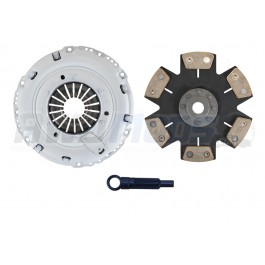Sintered iron clutch disks are strictly for endurance racing.
Ceramic clutch vs kevlar clutch.
They last 2 3 times longer than clutch discs made of organic materials.
Exedy ceramic clutches come in a range of racing and sports clutches.
Ceramic clutches will wear much faster if you ride the clutch and can experience some shudder or chatter on engagement.
An organic clutch disc is designed for maximum drivability.
The downside was chatter which wasn t all that bad after getting.
It can resist heat up to 390c.
Fxss kevlar can be used with bfxx ceramic in the same clutch this will give a unique characteristic to the clutch as it will have ceramic and kevlar.
Just trying not to waste a couple of days in doing the swap over and then the swap back if it becomes a pig.
We ve used kevlar clutch discs in cars with up to 600 lb ft of torque that were regularly drag raced and life expectancy is good.
Ceramic clutch plates are ironically made with a combination of copper iron bronze and silicon and graphite.
Carbon ceramic should be left to high power cars that see lots of drag racing or are dedicated track drag cars.
Used for racing application and regular drive.
Does it give any sort of gradual friction or is it just chatter chatter chatter grab.
On the other hand a ceramic clutch disc is able to withstand temperatures in excess of 1000f.
It s hard to buy a replacement clutch at least if you want to understand what you re buying.
A kevlar disk is a good choice for a heavily tracked or road raced cars especially with forced induction.
Pega fxss kevlar is one of the best made kevlar friction material in the world.
And in the difference between organic disc vs ceramic disc it s the biggest factor for most drivers.
Kevlar clutch discs have two key benefits.
As with any clutch it s all in how you drive.
Keeping in mind also that a ceramic clutch is quite savage on both its meeting components the flywheel pressure plate.
They re incredibly durable and they always engage the flywheel smoothly.

